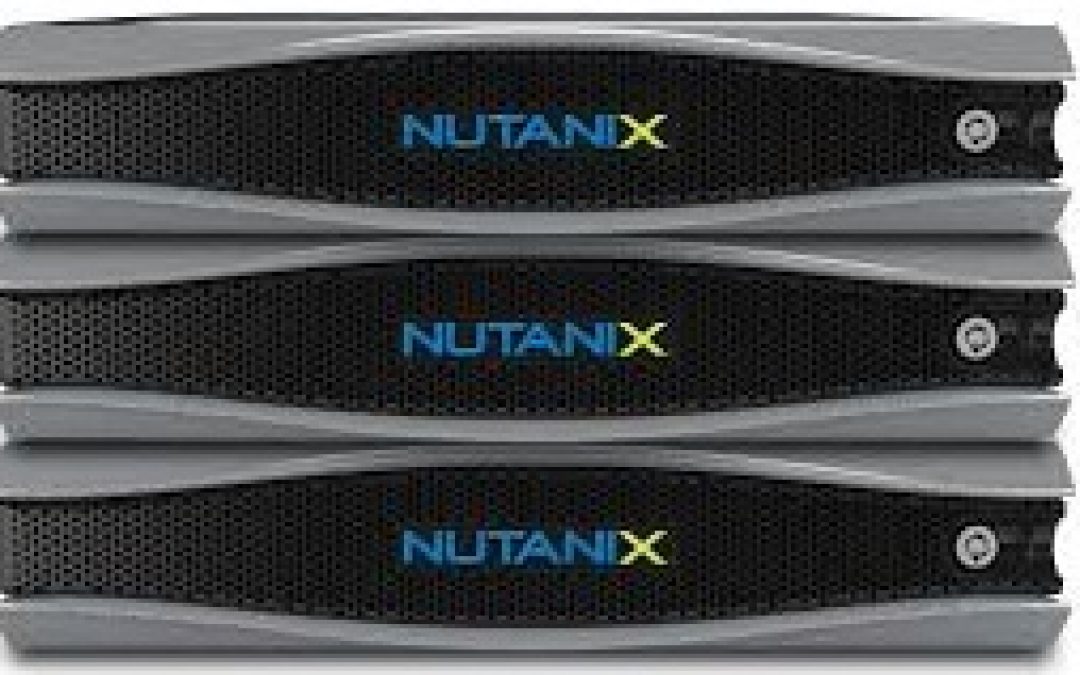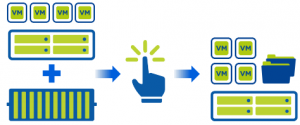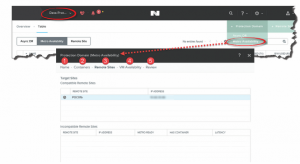Every last quarter of the year the storage industry is thriving with energy. Most storage vendors release new hardware platforms and/or new major software enhancements. 2016 has proved to be no different. Cisco HyperFlex 1.8 (GA September), Atlantis HyperScale HS-338 (GA October), Microsoft S2D 1.0 (GA October), VMware vSAN 6.5 (GA November), SimpliVity 3.5.3 (GA November),), Atlantis USX 3.5.1 (GA December), VxRail 4.0 (GA December), and now Nutanix AOS 5.0 (GA December).
With the release of AOS 5.0, Nutanix brings entirely new functionality to the table as well as enhancements to existing features. Although Nutanix is elevating its hyper-converged platform into a full Private Cloud stack, we have elected to only cover the most noticeable changes directly related to storage. Visit the updated comparison HERE
Acropolis File Services (AFS)
Nutanix is the first platform in our SDS/HCI category to natively support file shares for storing home directories, department shares and/or user profiles. As Acropolis File Services (AFS) is a software-defined scale-out solution, high availability is integrated by having multiple VM’s spread across the cluster with a minimum of three. It also integrates with Active Directory and DNS, and supports essentials like previous versions, quotas and remote replication. However, there are some caveats though in this General Availability (GA) release. AFS is not available when Hyper-V is used as the hypervisor. In addition AFS currently only serves out SMB shares and only supports
Windows clients.
Acropolis Block Services (ABS)
While many SDS/HCI started out exclusively supporting only hypervisors and no bare metal server deployments, most of them nowadays do support physical servers as environments are often not 100% virtualized. Nutanix introduced general availability of its Acropolis Block Services (ABS) in AOS 4.7 and builds on top of this by extending Linux platform support to CentOS, providing online volume resizing, improving dynamic load balancing and offering security enhancements through CHAP (secure iSCSI access).
Metro Availability Witness
Nutanix was one of the few SDS/HCI platforms that offered a stretched cluster solutions without a tie-breaker. This meant that certain split-brain scenarios like site network partitioning, could not be 100% avoided. AOS 5.0 fills that gap by providing a Witness VM that can be deployed on a third geographical site. However, support is limited to VMWare vSphere environments. Hyper-V and AHV (Nutanix’ own hypervisor) environments still have to cope without a tie-breaker.
Single-node Backup Target
Nutanix clusters normally consist of at least 3 nodes. However, there now is an exception to this rule when you need an off-cluster on-premises backup-only target based on Nutanix remote replication. You can deploy a single-node cluster that still has data protection through replicas and uses deduplication/compression for efficiency. Keep in mind though that you cannot use the single-node as a remote replication target only and not as a generic backup target for your CommVault or Veeam backups.
Self-service Restore GUI
Previously restoring a single file from within a Windows Guest VM was possible, but had to be executed entirely through the command-line. AOS 5.0 presents a Self Service Restore (SSR) web interface in the Windows Guest VM so all selecting and (un)mounting actions can be performed by just a few mouse-clicks.
Efficiency Enhancements
Nutanix introduces an advanced compression algorithm for cold data to further efficiency gains. LZ4 is used for inline compression, whereas LZ4HC is used for post-process compression. Regular data is considered ‘cold’ when there has been no read/write access for 3 days. Immutable data (eg. snapshots) is considered ‘cold’ when there has been no read/write access for 1 day. Nutanix warrants that while using the deeper compression algorithm it still is 100% a background process with no front-end performance implication and that compression is automatically throttled down to prevent client performance degradation. Remember that post-process compression is still optional and can be turned on/off.
Please go and view Nutanix AOS 5.0 and all recent updates of other SDS/HCI platforms here. The comparison is free to access and updated as new releases become available – happy comparing!
Herman Rutten – Lead Category Consultant (SDS & HCI)

Herman Rutten

Latest posts by Herman Rutten (see all)
- StarWind HyperConverged Appliance enters the WhatMatrix - December 3, 2019
- SDS & HCI Updates: Nutanix, NetApp, vSAN, HPE - September 3, 2019
- WhatMatrix adds Scale Computing HC3 to SDS/HCI Lineup - June 5, 2019







